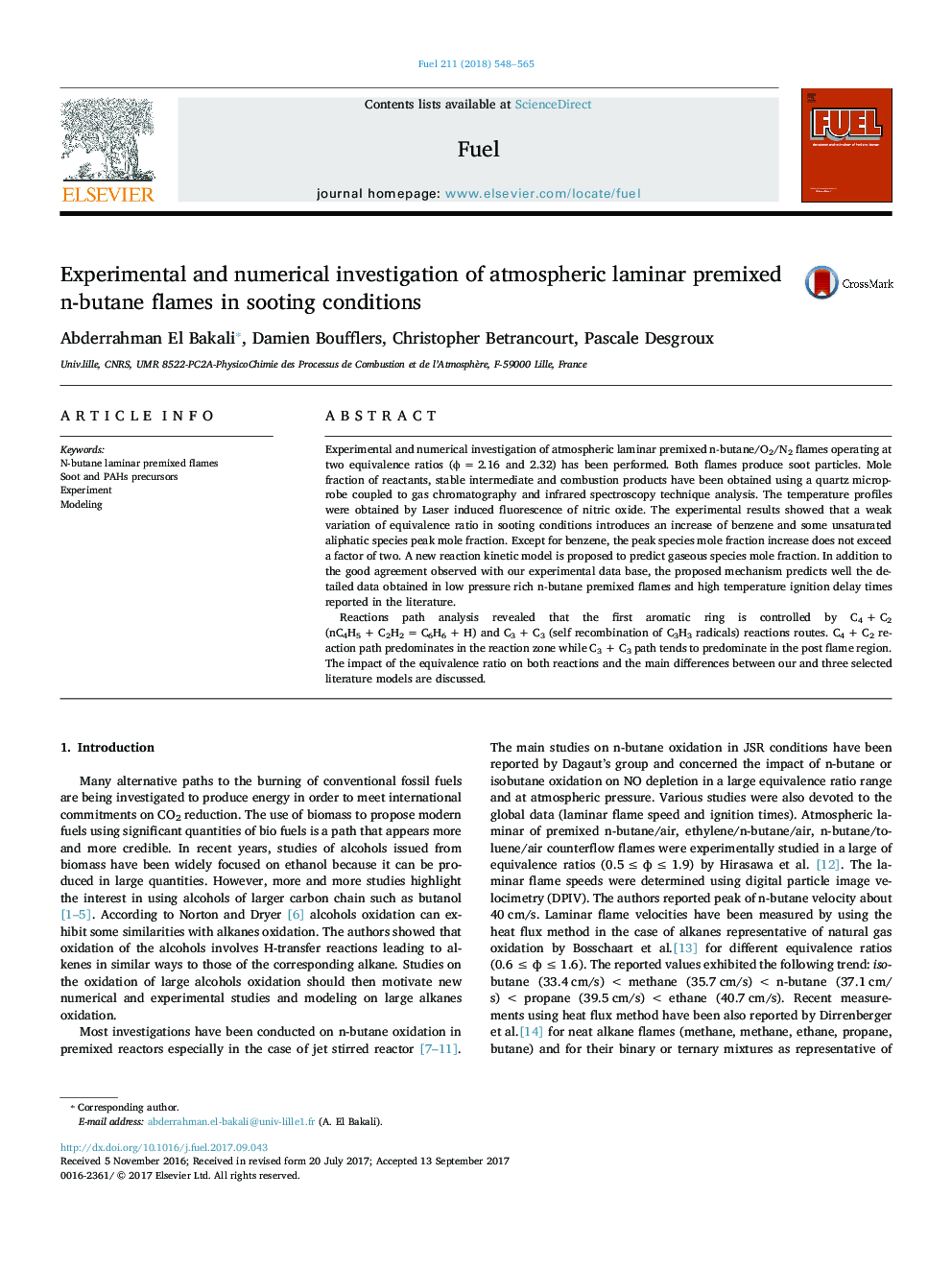| Article ID | Journal | Published Year | Pages | File Type |
|---|---|---|---|---|
| 6473539 | Fuel | 2018 | 18 Pages |
â¢New experimental species mole fraction and temperature profiles have been obtained at atmospheric pressure laminar premixed flames of n-butane in sooting conditions.â¢A detailed reaction mechanism was developed and validated for n-butane oxidation.
Experimental and numerical investigation of atmospheric laminar premixed n-butane/O2/N2 flames operating at two equivalence ratios (ÏÂ =Â 2.16 and 2.32) has been performed. Both flames produce soot particles. Mole fraction of reactants, stable intermediate and combustion products have been obtained using a quartz microprobe coupled to gas chromatography and infrared spectroscopy technique analysis. The temperature profiles were obtained by Laser induced fluorescence of nitric oxide. The experimental results showed that a weak variation of equivalence ratio in sooting conditions introduces an increase of benzene and some unsaturated aliphatic species peak mole fraction. Except for benzene, the peak species mole fraction increase does not exceed a factor of two. A new reaction kinetic model is proposed to predict gaseous species mole fraction. In addition to the good agreement observed with our experimental data base, the proposed mechanism predicts well the detailed data obtained in low pressure rich n-butane premixed flames and high temperature ignition delay times reported in the literature.Reactions path analysis revealed that the first aromatic ring is controlled by C4Â +Â C2 (nC4H5Â +Â C2H2Â =Â C6H6Â +Â H) and C3Â +Â C3 (self recombination of C3H3 radicals) reactions routes. C4Â +Â C2 reaction path predominates in the reaction zone while C3Â +Â C3 path tends to predominate in the post flame region. The impact of the equivalence ratio on both reactions and the main differences between our and three selected literature models are discussed.
